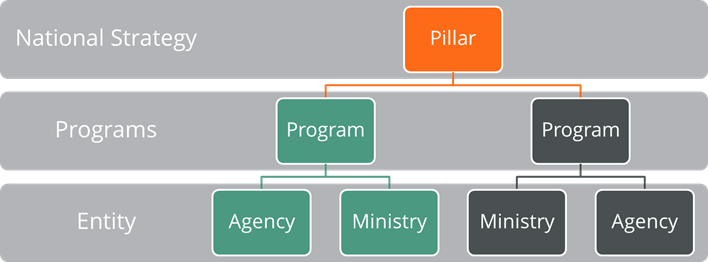How to Align Government Digital Transformation to Inclusive and Sustainable Growth
FreeBalance was fortunate to provide insights into government digital transformation at the recent Tech Hub Islands Summit at which three important questions were considered. Our views on each can be found in this three part blog series:
- Government Digital Transformation and Inclusive Growth
- How to Get Government Digital Transformation Right
- Change Management for Government Digital Transformation
How Important is Inclusivity in Government Digital Transformation?
The use of digital technology to increase government efficiency and service delivery often does not benefit disadvantaged citizens and vulnerable communities. In fact, digital adoption in government can exacerbate inequalities resulting in reduced social cohesion and increased conflict.
However, government digital transformations that overcome the digital divide can improve equity and inclusion. This might include improving digital infrastructure in underserved areas, providing devices for e-learning, or focusing services via devices currently in use.
How Can Governments Ensure That Digital Services Are Inclusive?
Government digital transformation overlaps with overall country digital transformation. It is therefore important for governments to use program or performance budgeting to make sure that expenditure on digital transformation initiatives actually deliver against the national development strategy.

This means thinking about digital enablement as a public investment. In other words, governments need effective Public Financial Management (PFM) to optimize the growth and inclusivity opportunities inherent in a digital transformation program.
Government Checklist for Inclusive Digital Transformation
- National development priorities, including the Sustainable Development Goals (SDGs), should be expressed within performance budgeting structures in the Chart of Accounts (CoA)
- Digital transformation priorities to be tied to the appropriate program structures
- Output and outcome targets for digital transformation should be linked to the Chart of Goals that can be expressed as KPIs or a balanced scorecard
- Government Resource Planning (GRP) system that manages the entire budget cycle and enables:
- Multiple year planning and analysis to select the most promising public investments, because these will take years to implement and to track results
- Multiple year budget preparation tied to public investments, capital, development, operational, and salary spending during fiscal years
- Integrated budget controls using appropriations, commitment accounting and CoAs
- Purchasing and procurement as well as debt and grant management during fiscal years tracking spending and physical outputs
- Monitoring outcomes for investment programs to make allocation changes during fiscal years while adapting future year budgets
- Fiscal transparency to provide government results to encourage the use of digital technologies, and private sector digital investments

How Can The Public and Private Sectors Collaborate to Achieve Digital Transformation?
Successful government digital transformation supports private sector growth and private sector digital investment is a force multiplier for government effectiveness when coordinated. However, to get this right, transparency is critical.
Transparency enables coordination by reducing perceived investment risks, particularly encouraging sustainable development around Sustainable Development Goal (SDG) 17 – Partnership for the Global Goals.
PFM actions to demonstrate digital transformation commitments are:
- Procurement and planning that coordinates local company growth and improves digital infrastructure (supporting Target 17.14 Policy Coherence for Sustainable Development)
- Social investments to provide educated and healthy citizens for business productivity and innovation (supporting Target 17.8 Science and Innovation)
- Tax reform, simplification, and transparency to increase government revenue through tax compliance and small business formalization while demonstrating value for this money (supporting Target 17.1 Mobilizing Resources)
- Fiscal transparency and accountability across the budget cycle to improve reduce brain drain credit ratings (supporting Target 17.4 Debt Sustainability) and anticorruption (supporting Target 16.5 anticorruption Target 16.6 Accountable & Transparent Institutions)
For more information on how the FreeBalance Accountability Suite™ supports the Sustainable Development Goals, please get in touch.
